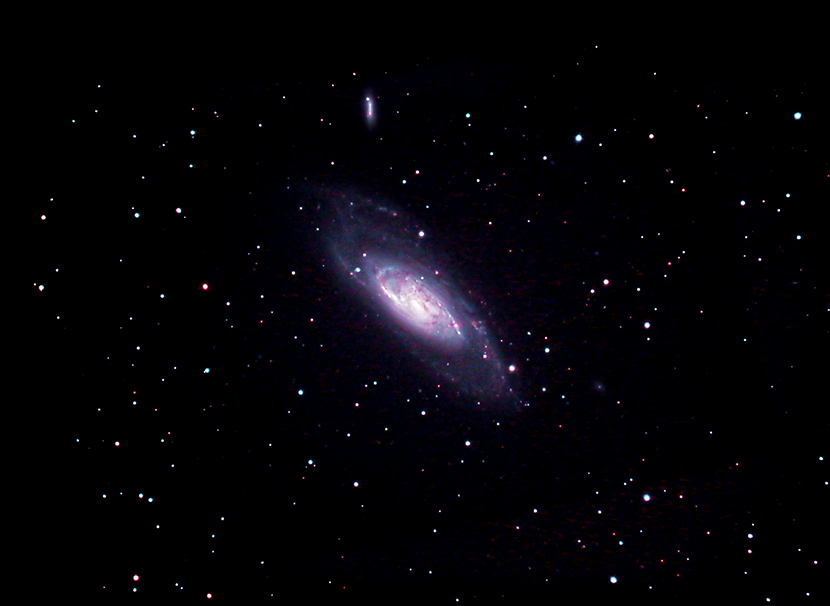Klaus
Yes

Messier 106
© 2018 Klaus Brasch
M-106 in Canes Venatici is one of the most beautiful galaxies in the Messier catalog, both visually and photographically, and yet not very familiar to many casual observers. It has an intensely bright nucleus with distinct spiral structure and several prominent red H-II star forming regions, but a much fainter outer spiral disk which appears blue in integrated light. The galaxy is very active in star formation and houses a super-massive black hole. It is approximately 26 million light years from us, yet is of moderately bright magnitude 8.3. This image is a composite of 12 x 5 minute exposures taken with a C-14 at f/7 and a 12.5-inch CDK at f/8, all with a Hutech modified Canon 6D and IDAS LPS-V4 filter. Images were stacked and calibrated in Registar and processed in Photoshop CS6.
The following was retrieved from Wikipedia, the free encyclopedia, at https://en.wikipedia.org/wiki/Messier_106 on March 1, 2014.
Messier 106
Messier 106 (also known as NGC 4258) is an intermediate spiral galaxy in the constellation Canes Venatici. It was discovered by Pierre Méchain in 1781. M106 is at a distance of about 22 to 25 million light-years away from Earth. M106 contains an active nucleus classified as a Type 2 Seyfert, and the presence of a central supermassive black hole has been demonstrated from radio-wavelength observations of the rotation of a disk of molecular gas orbiting within the inner light-year around the black hole. NGC 4217 is a possible companion galaxy of Messier 106. A Type II supernova was observed in this galaxy in May 2014.
The license terms of this written work from Wikipedia may be found at http://creativecommons.org/licenses/by-sa/3.0/
Outreach || Flagstaff || Photos || Articles || Observing Sites || Weather
Coordinated Universal Time || National Weather Service
info@coconinoastro.org

